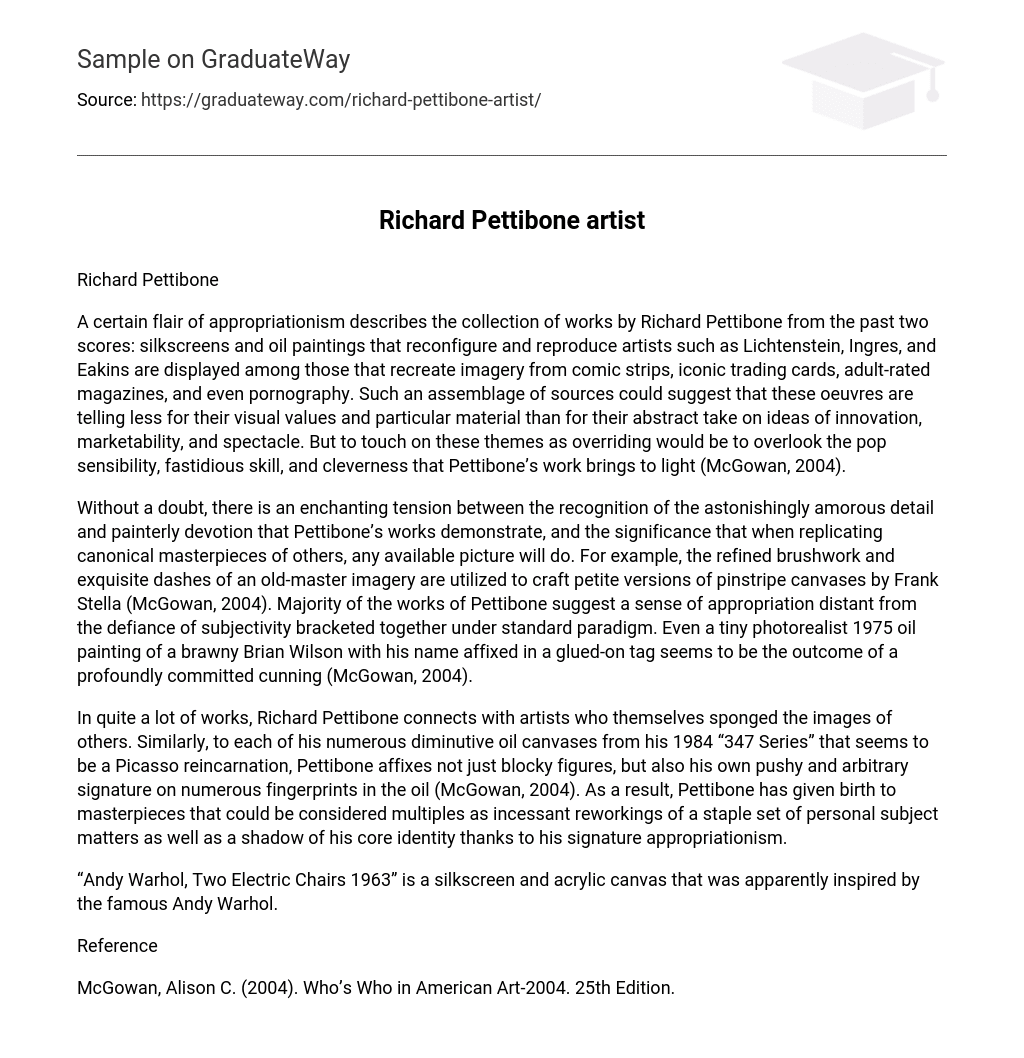Richard Pettibone
A certain flair of appropriationism describes the collection of works by Richard Pettibone from the past two scores: silkscreens and oil paintings that reconfigure and reproduce artists such as Lichtenstein, Ingres, and Eakins are displayed among those that recreate imagery from comic strips, iconic trading cards, adult-rated magazines, and even pornography. Such an assemblage of sources could suggest that these oeuvres are telling less for their visual values and particular material than for their abstract take on ideas of innovation, marketability, and spectacle. But to touch on these themes as overriding would be to overlook the pop sensibility, fastidious skill, and cleverness that Pettibone’s work brings to light (McGowan, 2004).
Without a doubt, there is an enchanting tension between the recognition of the astonishingly amorous detail and painterly devotion that Pettibone’s works demonstrate, and the significance that when replicating canonical masterpieces of others, any available picture will do. For example, the refined brushwork and exquisite dashes of an old-master imagery are utilized to craft petite versions of pinstripe canvases by Frank Stella (McGowan, 2004). Majority of the works of Pettibone suggest a sense of appropriation distant from the defiance of subjectivity bracketed together under standard paradigm. Even a tiny photorealist 1975 oil painting of a brawny Brian Wilson with his name affixed in a glued-on tag seems to be the outcome of a profoundly committed cunning (McGowan, 2004).
In quite a lot of works, Richard Pettibone connects with artists who themselves sponged the images of others. Similarly, to each of his numerous diminutive oil canvases from his 1984 “347 Series” that seems to be a Picasso reincarnation, Pettibone affixes not just blocky figures, but also his own pushy and arbitrary signature on numerous fingerprints in the oil (McGowan, 2004). As a result, Pettibone has given birth to masterpieces that could be considered multiples as incessant reworkings of a staple set of personal subject matters as well as a shadow of his core identity thanks to his signature appropriationism.
“Andy Warhol, Two Electric Chairs 1963” is a silkscreen and acrylic canvas that was apparently inspired by the famous Andy Warhol.
Reference
McGowan, Alison C. (2004). Who’s Who in American Art-2004. 25th Edition.





